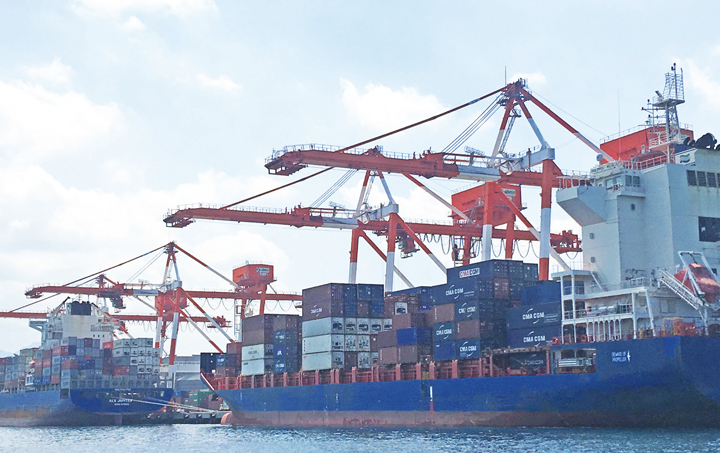
A MAJOR shipping firm said it is important to take into consideration the needs of both import and export and inter-island trades in solving the country’s shipping and logistics infrastructure woes.
Doris Magsaysay-Ho, CEO of Magsaysay Group of Companies, underscored that trade dictates the port infrastructure.
“It is important to design the country’s shipping and logistics infrastructure around the needs of both import/export and for interisland trades. The port design should address the needs of trade, if exports require containerized services, a cold chain, liquid cargoes, bulk or other infrastructure,” Magsaysay-Ho presented on Wednesday during the Anti-Red Tape Authority (ARTA)’s Logistics Forum 2022.
She emphasized that in solving the country’s logistics infrastructure woes, these two factors must be considered: “what is that trade and what is the need of that trade.”
Magsaysay-Ho cited the Port of Rotterdam in Netherlands as an example, which she said is the gateway to Europe. “In that port, they have all kinds: container port, even ports for liquids, all the juices that enter Europe go there and those ports are not container ports, they are big depots for juice, milk…So we have to remember that trade dictates the port infrastructure.”
Feeder economy
Meanwhile, Magsaysay-Ho pointed out that the Philippines is a “feeder economy,” since the country’s economy is driven by consumption and has little outgoing trade.
“In terms of our import and export trade, our trade in the Philippines is driven by consumption, we are not exporting, we have very little manufacturing,” she stressed.
Magsaysay-Ho also revealed in her presentation that the country’s exporters and importers pay an additional feeder transport and repositioning costs of empty containers, contrary to other countries that are hub ports or that have a lot of exports.
Since Philippine trade is small, she said mother vessels don’t come to the country. Import and export goods are brought in and out of the Philippines on foreign-operated shipping feeder ships.
Magsaysay-Ho stressed that the lack of focus on building the country’s manufacturing and agricultural exports these past decades has resulted in an imbalance of trade, so containers arrive full and leave empty.
“So because we have very little outgoing trade, so for every 10 boxes that come to the Philippines, 4 may go back full, the rest are empty and that’s why they all get stuck. Nobody wants to come here because they don’t want their containers stuck in the Philippines,” Magsaysay-Ho said.
The official of the major shipping firm highlighted that being a feeder economy, the Philippines needs to have scale if it aims to make exports and imports more cost-efficient. She cited Vietnam as an example, which she said is “determined to manufacture at scale because their goal is to get out of being a feeder economy.”
Magsaysay-Ho also revealed the reason behind the high land logistics costs. She said “our export processing zones are located in [Philippine Economic Zone Authority] PEZAs that are often far away from ports. Ports are designed without needed logistics hubs around them.”
With these challenges, the official of the major shipping firm laid out the proposed infrastructure solutions for export and import trade.
Among the solutions is to urge the government “to improve the vital performance of ports with a ‘whole of government’ working on solutions outside the port.” Magsaysay-Ho said international ports in Luzon including International Container Terminals Services, Inc. (ICTSI) have made “significant” investments and contribute “valuable” revenue to government.
Another solution she proposed is to pattern the Department of Trade and Industry (DTI)’s plans to develop industry clusters after achieving economies of scale, particularly to: “attract the ecosystem of suppliers when they serve more than one customer; create opportunities to invest in production of part of the supply and value chain; and lower the cost of shipping and logistics and other costs because of scale.”
“DTI Secretary Alfredo Pascual has talked about clusters and we’re really excited about his idea to create clusters because the most important part about trade, the most important impact on cost of transport is scale,” Magsaysay-Ho said.
The official of the major shipping firm also pointed out, “Right now everything is tingi, as I said everything is small small small, so therefore the cost is also high high high.”
Another solution to the logistics woes, she said, “These production clusters should ideally be located near port zones to reduce the costs of building roads and rails to connect exports to ports.”
“It’s so much cheaper when you have scale. So what we hope we can do in the future is create production hubs that have scale in clusters around the port area,” Magsaysay-Ho added.
Image credits: Nonie Reyes
